
http://www.iaeme.com/IJM/index.asp 75 editor@iaeme.com
International Journal of Management (IJM)
Volume 8, Issue 4, July–August 2017, pp.75–81, Article ID: IJM_08_04_010
Available online at
http://www.iaeme.com/ijm/issues.asp?JType=IJM&VType=8&IType=4
Journal Impact Factor (2016): 8.1920 (Calculated by GISI) www.jifactor.com
ISSN Print: 0976-6502 and ISSN Online: 0976-6510
© IAEME Publication
PROSPECT OF TRADITIONAL CRAFT IN
PRESENT ECONOMY: A STUDY OF EARTHEN
DOLL OF KRISHNAGAR, WEST BENGAL
Kandarpa Kanti Hazra
Research Scholar, Department of Business Administration,
Assam University, Silchar, India
Prof. (Dr) Arup Barman
Associate Professor, Department of Business Administration,
Assam University, Silchar, Assam, India
ABSTRACT
Art and culture are inseparable limbs of civilization. It represents the practice,
religious beliefs, and indicates spiritual upliftment and represents societal system of
that period. Clay pottery is an ancient craft in India. The art of Clay Pottery grew
along with the Civilization. Thus, the history of clay pottery is as old as the history of
human civilization. Pottery has a unique tempting appeal. Its association with religion
and usage in religious ceremonies has given a deeper significance and a wider
dimension. . In this fast changing and unstable market situation, when we concentrate
deeply on market demand, we sometime became ignorant about our native product of
significant potentiality. A little more nourishment can give that product a neck to neck
competition with contemporary goods. In addition to that we have the age old
historical heritage with this product, as earthen dolls in West Bengal. Earthen Doll is
not only enriched with age old tradition, but also singular in its symbolic
representation.
Key words: Craft, clay doll, heritage, prospect, art, market.
Cite this Article: Kandarpa Kanti Hazra and Prof. (Dr) Arup Barman, Prospect of
Traditional Craft in Present Economy: A Study of Earthen Doll of Krishnagar, West
Bengal. International Journal of Management, 8 (4), 2017, pp. 75–81.
http://www.iaeme.com/IJM/issues.asp?JType=IJM&VType=8&IType=4
1. INTRODUCTION
“Civilization [culture], being a process of long and complex growth, can only be thoroughly
understood when studied through its entire range; that the past is continually needed to
explain the present, and the whole to explain the past.” E. B. Tylor.
The traditional folk art of Indian Clay Pottery, particularly of Bengal, is considered
exceptional and best in the world. Indian are reflects the fusion of Social and religions

Kandarpa Kanti Hazra and Prof. (Dr) Arup Barman
http://www.iaeme.com/IJM/index.asp 76 editor@iaeme.com
conditions prevalent during the contemporary period when they were made. : Clay art in India
is said to be very mystical because it incorporates the five vital elements like Air,Fire, Earth,
Water and Ether. Various excavations in Mohenjadaro & Harappa have unearthed several clay
items in various forms and figurines. This age old method has been passed on from
generations and is actually the most sustainable art form which has seen so many changes but
still kept its place in our hearts
Handicrafts sector occupies an important place in the economy of West Bengal as it
contributes significantly to employment generation and export earnings. The economic
importance of the sector also lies in its high employment potential, low capital investment,
high value addition and a constant, if not increasing, demand both in the domestic and
overseas markets. The sector provides employment to more than 3 lakh craft persons mostly
from rural areas. There is one name – Clay Doll of Ghurni (PS Krishnanagar, District Nadia),
which seems to play an important role in the export market of decorative products. This
industry is spread all over the area, including Kalipur, Bhatjangla, Pal Para, Halder Para,
Sandhya Para etc. There are many small units which are employing the similar process of
manufacturing and producing similar products but facing similar opportunities and threats. In
West Bengal, Ghurni is not the only cluster, which is actively involved in the craft of making
Clay Dolls. But in terms of content, approach and style, it’s undoubtedly a unique of its kind.
These dolls are unique in their realism and the quality of their finish; which truly represent a
breakaway from the traditional form. Our religious belief and practices are mainly depends on
the narratives. Hindu narretives are based on the symbols and stories. Every region has its
own story, belief and story of God and Goddes by their own. Ghurni of Krishnagar are
celebrate human life ,religion by presenting nature, daily life activities, human body and
domestic goods through their craft.
2. BACKGROUND OF ANCIANT ART OF KRISHNANAGAR, NADIA
DISTRICT
The place Ghurni, is widely known by its nearby town, named Krishnahar. Previously,
Krishnagar was known by its old name Rewe. Krishnagar was the name came from Maharaja
Krishnachandra, who was a great art and music lover and barrowed the potters family from
nator of Bangladesh and established them in Krishnagar.
Clay Art and Culture in West Bengal: The reproduction of mankind is a great marvel and
mystery.
Had God consulted me in the matter, I should have advised him to continue the genanderation
of the species by fashioning them out of clay. — Martin Luther
West Bengal is a attractive area for examine clay art as it has a traditional enriched history of
making earthen dolls . From the ancient time ,till today ,a lot many art lover are surviving and
enthusiastically involve in the craft. Ignoring all the adversities the craftsman continuously
managing and passionately trying to rejuvenate its lost glory.
Understanding the Genre and Forms: A review of several scholars has given thick
descriptions of certain forms with the aim to aid to the identification of the forms. One of such
descriptive studies was done by P. C. Dasgupta (1958). With an exhaustive description of
some of the important figures. He argued for the analogies in art forms of the site with other
terracotta yielding sites of Bengal. He also noted the relatedness of Sunga style with stone
depictions of Bharut, Sanchi, Bodh Gaya and Bhaja. Early Historic terracotta forms and had
also some astonishing similarity with certain forms with corresponding north Indian terracotta
art forms (Gupta, D. 1959). Several scholars have attempted to describe the terracotta forms
found from different sites. Bautze (1989) focused on various seated figurines in th and argued

Prospect of Traditional Craft in Present Economy: A Study of Earthen Doll of Krishnagar,
West Bengal
http://www.iaeme.com/IJM/index.asp 77 editor@iaeme.com
that it is difficult to correlate with exact gods and goddesses of Hindu mythology. With a
descriptive study of such toy material he argued that the paucity of historical records made it
difficult to identify the actual use of such carts. Mukherji (1991) gave a detailed description of
18 terracotta forms found from different important terracotta yielding sites of West Bengal.
Since, a variety of winged earthen art style occupy an important position in findings several
scholars have given descriptive account of such important interpretation.
Figure 1 Bengal Art & Craft, Krishna nagarer matir murti pic 2 thirty-seven-year-old mechanical
engineer Satyanarayana of Hyderabad who made for occetion for hoil. launched “Taste Buds” a chain
of tea stalls on December 11, 2015, across Hyderabad. Instead of using plastic or paper cups, he serves
his customers in cups shaped like glasse
Citing examples of inscriptions found in pots, pitchers and lamps from ,De (1996) with a
descriptive study showed that there was migration of communities from north-west India to
Lower Bengal. He further stated that pottery and terracotta items represented a) lifeways of
people, b) popular myths, especially epic, churning of the ocean, aquatic and marine life and
motifs. These indicate high level of artistic activities in ancient Bengal.
Rita Datta (1991) gave a descriptive account of certain female and also male figures from
Farakka which are housed in State Archaeological Museum, Kolkata. She concluded that fan-
shaped headdress of these figures with vertical scratches were typical to that of Kushana
period and the associated finds from the habitation deposit also confirmed a Kushana
affiliation.
Religious affinity of the terracotta materials have been done by Mukherjee (1996). He
studied several figurines, plaques and seals from different sites of West Bengal .
Bengal”s association with Buddhism. Taking material evidences from sites like Tamluk,
Tilda, Chandraketugarh, and Karnasuvarna, he argued that evidences such as Vihara, Stupa,
Buddha head, Jataka scenes, Bodhisattava figures and heads, Torana, seated Buddha,
suggested a strong influence of Buddhism in West Bengal. King Ashoka, Fa-Hien, and Hiuen-
Tsang were also influential over Bengal culture. P. C. Dasgupta (1958) also mentioned about
the similar influences through the study of terracotta art forms.
S.S. Biswas (1981: 111) argued “…In the perspective of an ancient tradition and changing
style through epochs these earthen art eloquently compliment the culture… They indeed
provide a valuable source of material needed for reconstructing some of the forgotten chapters
of the socio-cultural history of the country. The ethnic groups, their daily life, their costumes,
jewellery, headdress, etc., In a more recent paper Jayaswal (2002) gave a detailed description
of the ritual use of contemporary terracotta art forms exchanged through jajmani system.

Kandarpa Kanti Hazra and Prof. (Dr) Arup Barman
http://www.iaeme.com/IJM/index.asp 78 editor@iaeme.com
3. ECONOMIC STRUCTURE OF THE CITY
As a whole, Krishnanagar is an agricultural distribution centre. The economy is primarily
based on small- to medium-scale agro-industries and trade. The surrounding region produces
rice, jute, ceramics, mangoes, cattle, poultry and fish. There is unrealized demand for building
large food storage, refrigeration and processing plants. There are a few sugar mills. Many
expertise are to be found in this heritage city. Halwaikars or moyras (who prepare sweets) of
Krishnagar are famous. While they produce all varieties of sweets, there are some which bear
the hallmark of the city. 'Sarbhaja' and 'Sarpuria' are inventions that mark the talent of
Krishnanagar's halwaikars. The shop of "Adhar Chandra Das" is famous for the above-
mentioned sweet variants.Despite the economic boom in India in the 21st century, so far there
have been no major industrial investment proposals for the town.
This pottery is very popular and in most of the international exhibitions held since 1851 -
in London, Paris and Boston -
Krishnanagar clay dolls have won medals and certificates and also great admiration from
the Europeans. The exquisite craftsmanship of these artisans have earned them laurels and
accolades from the British royalty like Queen Victoria as well as other important people of the
British Raj and Catholic Popes in recent times. The first rewarded artist was Sri Ram Paul
(1819-1885). Presently the eminent artists are Sri Biren Paul, Goutam Paul, Ganesh Paul etc.
Many artists of this region went abroad and engaged as an engraver to create temple image
mosque, monuments etc. As late as 1990, when the Government of Russia wanted a bronze
figurine of Rabindranath Tagore for display in one of their national parks, they sought the
help of master craftsman Kartick Chandra Pal to give them a clay model. Paul provided it and
later converted it into a bronze sculpture.The Pal families are inseparable from the history of
the clay dolls of Krishnanagar. At present there are about 100 old families at Ghurni area,
belonging to the Pal family, who are actively engaged in clay modeling.
Clay pottery is an ancient craft in India. The art of Clay Pottery grew along with the
Civilization. Thus, the history of clay pottery is as old as the history of human civilization.
Pottery has a unique tempting appeal. Bengal archaeological finds in Pandu Rajar Dhipi and
elsewhere have proved that a high degree of skill and excellence was achieved by Bengal
Potters in those remote past days. Kumbhakars, the traditional potters, have been working on
their wheels in the villages of West Bengal and have been turning out numerous items of clay
products to cater the domestic and religious needs of the community.
Figure 2 These are the tools, today’s artisan are using for better craft.

Prospect of Traditional Craft in Present Economy: A Study of Earthen Doll of Krishnagar,
West Bengal
http://www.iaeme.com/IJM/index.asp 79 editor@iaeme.com
4. HINDRANCE TO REJUVENATE THE ART IN CONTEMPORARY
TRADE
Clay doll industry flourished in different villages of west Bengal according to the local
need of that particular area, and there is also some technical differences of making, from areas
to areas. There is a significant influence in socio cultural practice of earthen doll in west
Bengal .The geographical diversity has influenced to evolve the doll industry with
multiplicity. Different type of constraints being faced by households engaged in this pottery
as their profession. Though clay dolls makers are trying to continue their livelihood among lot
many adversities, but we can broadly categorized in two main constraints that should address
very quickly. One is infrastructural & economic constraints and other is marketing
constraints. Clay work is labour intensive and time consuming.
After spending a whole day to make a doll, they got a very little price. Then they have to
think where they going to sell it. Most of the makers depend on the village near by market,
which they called “haat”, held biweekly or tri-weekly in a adjoining place near village.
Sometimes we can see the lot number of earthen products in different village fare held in
different occasions. Those village fair (mela), artesian also expect to earn some extra money.
It is not only the unavailability of proper market, for which earthen doll industry is lacking to
emerge. A conscious scrutiny reveals several other reasons also. Some problems that creating
hindrance to evolve pottery as industry, are mentioned bellow:
4.1. Present Status of the Craft and Craftsman
In Bengal handicraft items are sold at prices above reasonable in showrooms. However, it is a
sad fact though that these art forms are in a miserable dying condition as in most parts of
India. A considerable lot has been said about this by Ministries, Development Blocks, NGO’s
but significant little done for their survival and glorification. It was under such dire
circumstances that the kumbhakaras (potters) of krishnanagar, together with enterprising
individuals, realized that they have to be the masters of their destiny if they wanted to prevent
the extinction of the centuries old Bengal terracotta art. And thus the struggle for existence
began and Terracotta and Clay handicrafts came to the surface and gradually reaching a
National and International Platform.
It is our socio-cultural duty to undertake the endeavor for preservation of handicrafts and
Art work at first place and continuation at the second place and that too without affecting their
nativity. That is why we are trying to focus at the concerned fact from anthropological and
ethnographic point of view. But at the same time it is also true that only the process of
archiving these local art forms will not be of any direct help for the folk artists at individual
level.
Survival of the fittest, the law of the world, is witnessed in this instance. The constant
effort to keep afloat goes on. If we agree that compromise is the rule of any game, then for
these artists it is a mode of life. As patrons and lovers of this art form, we can at the least
make an effort to help keep this art alive. The next time I go to one of these outlets, I will
definitely get them as gifts for my friends and family members. And I am sure they will only
be too happy to flaunt authentic Bengal terracotta in their homes and be noticed and
appreciated by everyone.
4.2. Objectives of Interest and Effect
In this work of earthen doll study, it is seen as one of the important material expression of
past and present people reflecting different interrelated facts of culture which can be




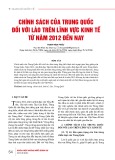
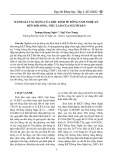



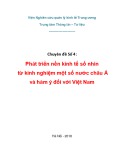
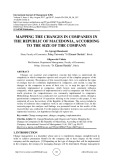







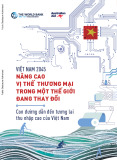




![Đề thi Kinh tế quốc tế II học kì 2 năm 2024-2025 có đáp án (Lần 1) - [kèm đề thi kết thúc học phần]](https://cdn.tailieu.vn/images/document/thumbnail/2025/20250822/kimphuong1001/135x160/23281755848629.jpg)


